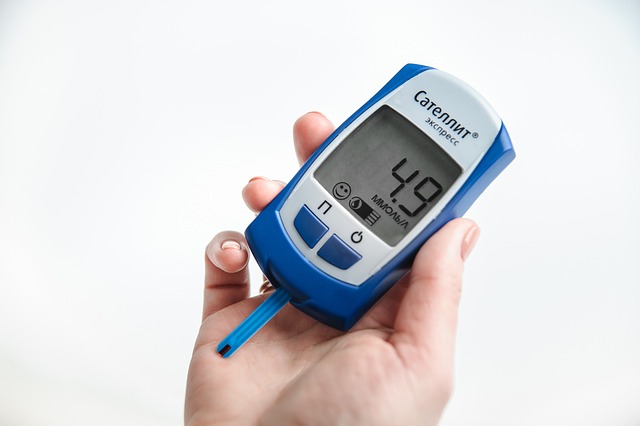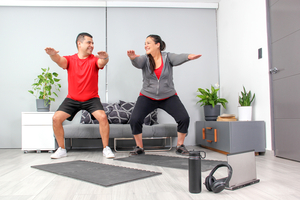The Diabetes Prevention Program (DPP) asks you to work towards getting at least 150 minutes per week of physical activity. That goal is far from arbitrary; rather, research has found that people who are in the Diabetes Prevention Program and who hit that threshold have lowered their risk for diabetes by half.
That goal of 150 minutes, or 2.5 hours, is equivalent to an average of less than 22 minutes per day. For some, that amount is doable. For example, you can hit that total if you get up a little earlier to work out, or you walk at lunch.
For other people, your days are too unpredictable or are already packed, and those 22 minutes remain elusive. are nowhere to be found. The good news is that you do not need to divide up your workouts into 22-minute segments, 7 days a week, to get the benefits. Instead, you can get in those 150 minutes in fits and starts, say, five minutes here and a half-hour there. As the Lark DPP check-in mentioned, it may help to break out the calculator to add up the minutes on a weekly basis.
These are some examples of ways you can add up the minutes to hit 150. If the following profiles do not fit you exactly, just pick and choose, and be creative, to come up with a schedule that works for you.
The C-Level Exec
You work unbelievably hard and are under pressure to hit tight deadlines while managing other people. Still, with that tough job may come chances to get fit without sacrifice.

- (50 minutes) You are probably up early reading and answering emails. While reading, pedal on a stationary bike or walk briskly on a treadmill set up with your computer. Aim for 10 minutes of pedaling or brisk walking each day.
- (15 minutes) Once a week, walk to your working business lunch and back.
- (25 minutes) You may be on the phone with business partners. When you do not need to be in front of the computer, take those calls outside and walk. Aim for 5 minutes outside each weekday.
- (60 minutes) Unwind once a week for an hour as you play golf (walk instead of using a cart), swim, or play tennis.
The Desk Job Worker
Do you spend all day at the office at a desk or in a cubicle? Try this:

- (25 minutes) Each weekday, walk for five minutes after parking your car in the morning and before entering the building.
- (15 minutes) Each weekday, use the restroom on a different floor two or more times a day, and take the stairs up and down.
- (25 minutes) For the first five minutes that you are on the phone each weekday, do squats, lunges, calf raises, arm swings, and any other movements you can think of.
- (40 minutes) Set a timer. Once an hour throughout the 8-hour workday, stand up and march in place for a minute.
- (45 minutes) On the weekend, walk at a park, play a sport, hike, or hit the gym - whatever you love - for 45 minutes.
The Social Butterfly
Do you need to keep up with your friends, and do you depend on them to keep you energized? Do not even think about giving that up! You can fit in work, friends, and fitness in a way such as the following.

- (40 minutes) Twice a week, meet friends for lunch...but walk to the restaurant and back. Choose a restaurant 10 minutes away from your workplace, or park 10 minutes away from the restaurant.
- (30 minutes) Three times a week, grab a coworker and go for a 10-minute, de-stressing walk on your break time.
- (40 minutes) On Saturday, walk with one or more friends to get in some good gossip, or call a friend on the phone while you hike.
- (40 minutes) On Sunday, hit the gym with one or more friends before meeting for your regular coffee and chit-chat.
The Working Student
Work, study, sleep, repeat. Every second of your life seems taken, but there is hope.

- (30 minutes) 5 days a week at work, walk for 6 minutes at lunchtime.
- (40 minutes) 5 days a week at work, do a flight of stairs or some squats or lunges once an hour for a minute.
- (40 minutes) If your classes are on a physical campus, walk to them and back to your car. If your lectures are online, listen while walking on a treadmill or while on the elliptical trainer.
- (40 minutes) Spend 40 minutes of your study time on the stationary bike. The bike is smoother than walking, so it is easier to re-read your notes, and you may find that the rhythmic pedaling helps you retain information better.
The Working Parent
You are already a master of multitasking, and that may be the trick to being able to squeeze in the minutes you need to hit your goals. Something like this may work for you:

- (10 minutes) After dinner Monday through Thursday, dance for 5 minutes to a song of your choice or your kids' choice.
- (30 minutes) Twice a week, walk with your kids for 15 minutes and catch up on their lives as you give them a chance for some quality time with you. If walking is not their thing, chase them (younger kids) or do sports drills with them (older kids).
- (30 minutes) Once a week, possibly Friday, treat the family to a healthy pre-made meal, such as a roast chicken and vegetable soup, or take-out meal, such as whole-wheat thin crust pizza with vegetables and green salad, or chicken soft tacos with extra vegetables and vegetarian beans. With the time you save from not cooking, you can get in a workout.
- (60 minutes) Stay at the park for 60 minutes after Saturday's soccer practice or game, and join in as your kids continue to burn off their limitless energy.
- (20 minutes) Walk around the mall with your kids before heading into the movie theater or department store.
Lark can help you prevent the need for an actual calculator to hit your 150 minutes. Log your workouts in Lark and you can look back over the past week to see what you have done. Plus, you'll get weekly updates to keep you informed and motivated. Getting active on your time can help you lower diabetes risk without stress.











.webp)






